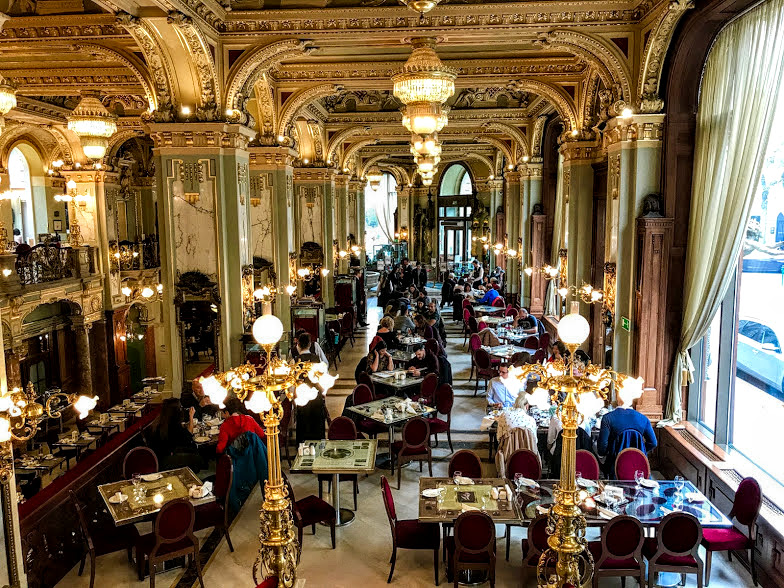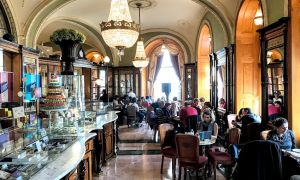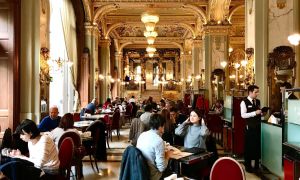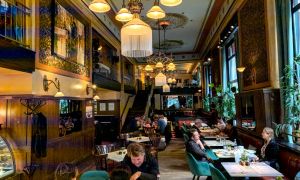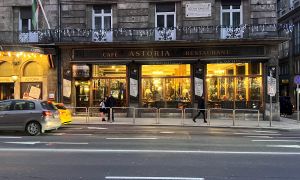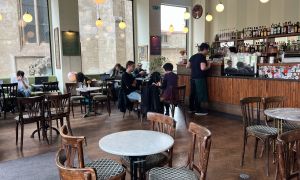Similar to Vienna, Budapest enjoyed a thriving coffeehouse culture during Austria-Hungary – around the turn of the 20th century, more than 500 cafés swarmed across Budapest. Apart from low-priced caffeine, coffeehouses offered a home away from home to the city's fast-growing populace. These high-ceilinged establishments were also central to social life: Many artists and journalists camped out for the whole day, even directing their mail to their favored café. Most coffeehouses have long since disappeared but a few are still around (or have reopened), drawing a tourist-heavy crowd. If you're curious about a contemporary "coffeehouse," drop by some of the specialty coffee shops too.
Gerbeaud is a historic pastry shop and café in Budapest's downtown. It was Swiss-Hungarian patissier Emil Gerbeaud, who, after taking over the business in 1884, revolutionized the Hungarian confectionery industry with inventive sweets and pastries.
Today, still, Gerbeaud puts out some of the best traditional Austro-Hungarian pastries, including Dobos, Esterházy, and Sacher tortes, krémes, and the namesake Gerbeaud cake. You can also try two of their signature treats: konyakmeggy, a brandied sour cherry bonbon enclosed by a chocolate shell, and macskanyelv, a milk chocolate shaped like a cat’s tongue.
The inside is lavishly decorated with crystal chandeliers, marble-topped tables, and cherrywood paneling. Gerbeaud was the see-and-be-seen hangout for Budapest's upper crust; it maintained an air of splendor even in the Communist era (1947-1989), under national ownership and a less Western-sounding name (Vörösmarty Cukrászda).
Today, Gerbeaud is mainly a tourist attraction, but I recommend you stop by for the pastries and a glimpse of the city's now-vanished coffeehouse culture. Part of the experience is basking in the historic glow of the space, but note that all to-go orders are half-priced.
